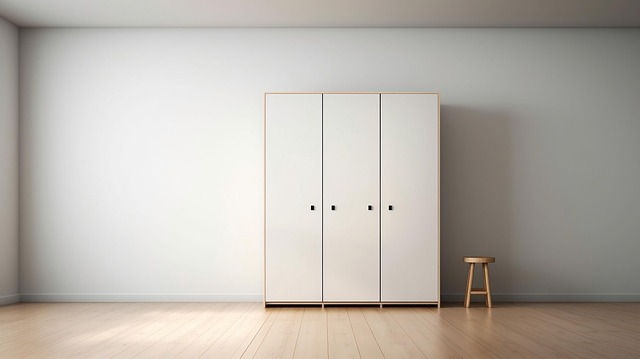Exploring Ideas to Clean Bathroom Stains And Dirt
Bathroom stains and dirt accumulate quickly due to constant moisture, soap residue, hard water deposits, and everyday use. From stubborn rust marks around fixtures to mildew creeping along grout lines, these unsightly blemishes can make even the most stylish bathroom appear neglected. Understanding the nature of different stains and applying targeted cleaning methods can restore your bathroom's sparkle while extending the life of surfaces and fixtures.

Understanding Common Bathroom Stains And Dirt
Bathrooms face unique cleaning challenges due to their high-moisture environment. Hard water leaves mineral deposits on faucets, showerheads, and glass doors, creating cloudy white or brownish stains. Soap scum builds up on tiles and tubs from the combination of soap and minerals in water. Mold and mildew thrive in damp corners, particularly along grout lines and caulking. Rust stains appear around metal fixtures or from iron-rich water. Toothpaste splatters, cosmetic spills, and general grime add to the maintenance burden. Each type of stain requires a specific approach for effective removal without damaging surfaces.
Effective Methods to Clean Bathroom Stains And Dirt
Tackling bathroom stains begins with identifying the culprit. For hard water deposits, white vinegar works exceptionally well due to its acidity, which dissolves mineral buildup. Spray undiluted vinegar on affected areas, let it sit for 15-30 minutes, then scrub with a non-abrasive sponge. For soap scum, a mixture of dish soap and warm water often suffices for light buildup, while tougher accumulations may require baking soda paste or commercial degreasers. Mold and mildew respond to hydrogen peroxide or diluted bleach solutions, though proper ventilation is essential when using bleach. Rust stains need specialized rust removers or a paste made from cream of tartar and hydrogen peroxide. Always test cleaning solutions on inconspicuous areas first to prevent surface damage.
Choosing the Right Bathroom Stains And Dirt Cleaner
Selecting appropriate cleaning products depends on your bathroom surfaces and stain types. Natural cleaners like vinegar, baking soda, and lemon juice offer eco-friendly options for routine maintenance and light stains. Commercial cleaners provide stronger formulations for stubborn problems, with specialized products targeting specific issues like lime scale, mold, or rust. Multi-surface bathroom cleaners work well for general cleaning but may lack the strength for heavy-duty stain removal. Abrasive cleaners and scrubbing pads effectively remove tough deposits but can scratch delicate surfaces like acrylic tubs or polished fixtures. Enzyme-based cleaners break down organic matter and work particularly well on soap scum. Reading product labels carefully ensures compatibility with your bathroom materials and helps avoid damage to finishes.
Preventive Strategies for Long-Term Cleanliness
Prevention significantly reduces the frequency and intensity of deep cleaning sessions. Wiping down shower walls and doors after each use removes water droplets before minerals can deposit. Installing a water softener addresses hard water problems at the source, dramatically reducing scale buildup throughout your bathroom. Ensuring adequate ventilation through exhaust fans or open windows minimizes moisture that encourages mold growth. Regular light cleaning, performed weekly or bi-weekly, prevents stains from becoming entrenched and difficult to remove. Applying protective coatings to glass shower doors creates a barrier that repels water and soap residue. Replacing worn caulking and grout sealer maintains waterproof barriers that prevent moisture infiltration and staining.
Tools and Techniques for Efficient Cleaning
Having the right tools makes bathroom cleaning more effective and less time-consuming. Microfiber cloths trap dirt and absorb moisture better than traditional rags, leaving surfaces streak-free. Grout brushes with stiff bristles reach into crevices where mold and mildew hide. Squeegees quickly remove water from shower walls and doors, preventing water spots. Electric scrubbers or drill brush attachments reduce physical effort for large areas or stubborn stains. Spray bottles allow even application of cleaning solutions, while bucket systems help organize supplies. For high areas like ceiling corners where mold may develop, extension poles with cleaning attachments provide safe reach without ladders. Working systematically from top to bottom ensures dirt and cleaning solutions flow downward, preventing re-contamination of already cleaned areas.
Natural Alternatives for Chemical-Sensitive Households
Many households prefer avoiding harsh chemicals due to sensitivities, environmental concerns, or the presence of children and pets. White vinegar serves as a powerful natural disinfectant and descaler, effective against most bathroom stains when given adequate contact time. Baking soda acts as a gentle abrasive that scrubs away grime without scratching surfaces. Combining these two creates a fizzing reaction that helps lift stubborn deposits. Castile soap provides plant-based cleaning power for general dirt and soap scum. Essential oils like tea tree, eucalyptus, or lavender add natural antimicrobial properties and pleasant scents to homemade cleaning solutions. Hydrogen peroxide offers bleaching and disinfecting capabilities without the harsh fumes of chlorine bleach. Steam cleaners use only heat and water to sanitize and loosen dirt, making them ideal for chemical-free deep cleaning. These natural methods require more frequent application and longer dwell times compared to commercial products but deliver satisfactory results for regular maintenance.
Conclusion
Maintaining a clean, stain-free bathroom requires understanding the various types of dirt and stains that accumulate, selecting appropriate cleaning methods and products, and implementing preventive measures. Whether choosing commercial cleaners or natural alternatives, consistent maintenance prevents minor issues from becoming major cleaning projects. By combining effective techniques with the right tools and a regular cleaning schedule, you can keep your bathroom looking fresh and hygienic with manageable effort.




